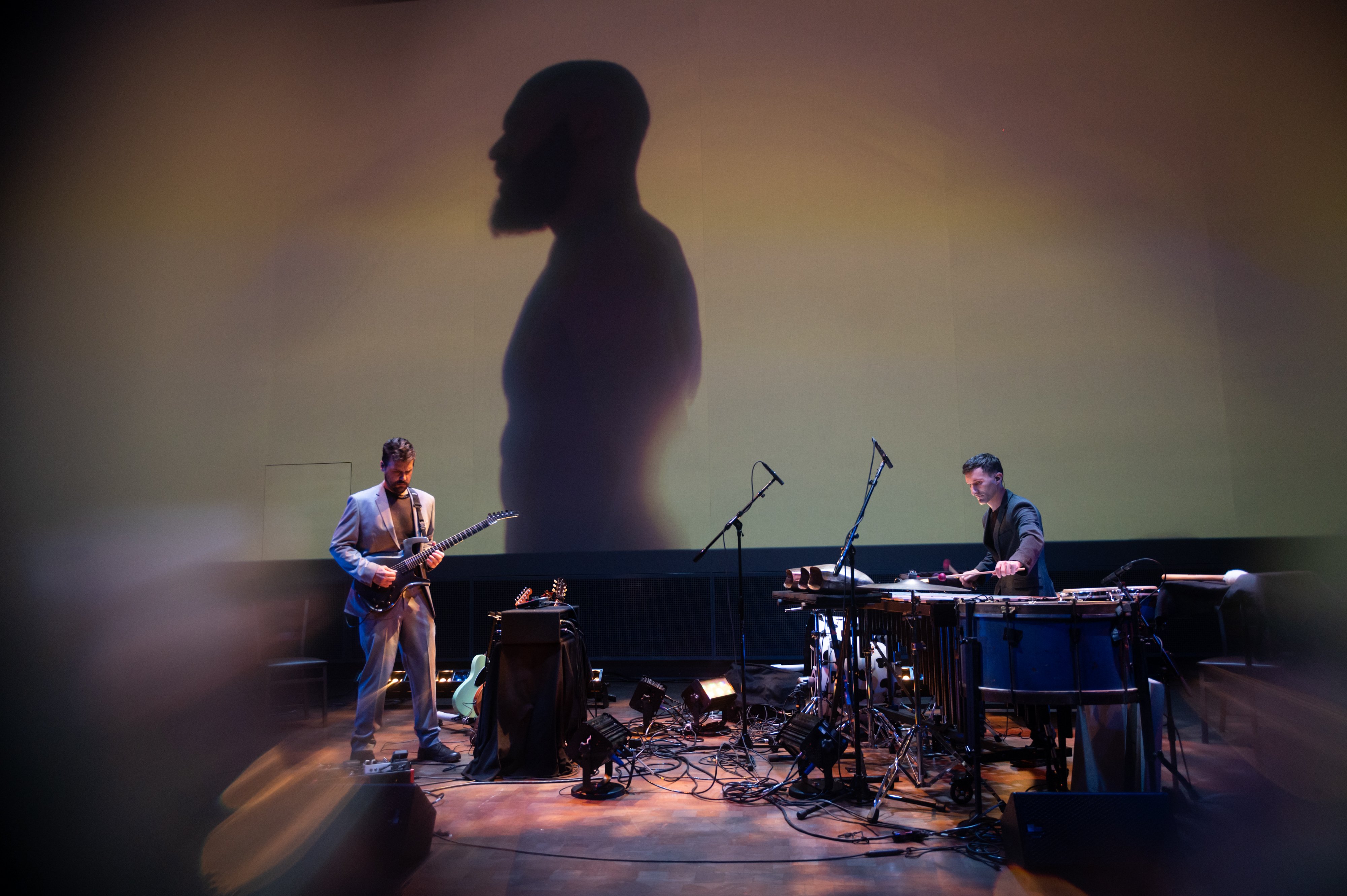The atmosphere of Bing Concert Hall studio was charged with an undercurrent of excitement as the lights around the audience dimmed and the stage backdrop brightened. Little did I know that the next hour would be a journey through sonic landscapes, a testament to the show’s unique collaboration with contemporary composers.
The Living Earth Show’s performance of “Lyra” whisked its audience into an auditory adventure in Bing Concert Hall studio last Saturday. The San Francisco-based ensemble explored the Greek myth of Orpheus and Eurydice through an interdisciplinary work of concert, dance, contemporary classical music and visual design.
In the tragic original story, the bard and poet Orpheus attempts to retrieve his wife Eurydice from the land of the dead after she is killed by a snakebite. Though he strikes a deal with the god of the dead, Hades, Orpheus ultimately fails to meet the conditions to secure Eurydice’s release.
The projector displayed some of Earth’s natural beauties, including glaciers, forests and deserts. The movements of the dancers complemented the backdrops — sharper movements when surrounded by glaciers, smoother movements when by the waves.
The stage was set with an intriguing array of instruments, from classical guitars to a diverse collection of percussion instruments. The show began with a projected scene of three individuals walking on the screen with a prominent sound of blowing winds, as if coming from a desert in the distance. They strolled to the foreground, where two men left the screen and appeared in real life as the ensemble.
Just as I started wondering what was going on, the ensemble interrupted the silence and began playing. The two musicians had clearly honed a synergy between Travis Andrews’s deft guitar work and Andy Meyerson’s rhythmic precision. This rhythmic precision synced masterfully with the visuals and dancing that was occurring in the background. It was like watching a silent movie: a film with no lyrics or dialogue, just visuals and sound.
Together, these elements came together in a narrative that resonated with shared human experiences of love, loss and the challenging journey of learning to let go. It is the kind of performance that can be initially perplexing, commanding its audience to pay careful attention to the different creative choices.
Indeed, there was an evident level of thought and intention behind each element of the show. Choreographer Vanessa Thiessen’s movement design, executed by live dance artist Babatunji Johnson, added an indescribable dimension to the performance. The dance elements were not merely an accompaniment but an integral part of the storytelling, embodying the emotional nuances of Orpheus and Eurydice with graceful movements that mirrored the ebb and flow of their tragic love, seamlessly translating passion, pain and delicate moments of their mythic journey.
Benjamin Tarquin’s cinematography elevated the performance to new heights, capturing an interplay of light and shadow. The prerecorded film elements seamlessly blended with the live performance, creating a harmonious convergence of digital and physical realms.
The night concluded when one of the dancers in the video “came to life.” They danced in silence as audience members squirmed in their seats to get a better view of his enactment. After the performance, a sense of awe and appreciation overcame the audience, manifesting in a grand standing ovation.
In that moment, I realized that The Living Earth Show had not just performed a concert — they had orchestrated a celebration of innovation, collaboration and the boundless possibilities that emerge when musicians embrace the spirit of exploration.
Editor’s Note: This article is a review and includes subjective opinions, thoughts and critiques.
